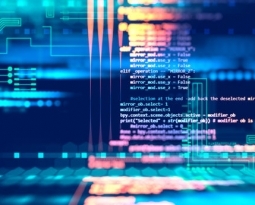Maryland Patent of the Month – February 2023
The idea of storing information beyond the Earth’s atmosphere may sound like a scene from a sci-fi movie, but in reality, its not too far-fetched. RKF Engineering Solutions, LLC, a tech company, has developed a system that can store information by changing the surface of a celestial body with less atmosphere than Earth, such as the Moon or Mars.
The system works by receiving an item to write on the surface of the celestial body from a user device, providing an instruction to a robot on the celestial body to write the item, and then receiving an image of the item written on the surface from the robot. This process is made possible by a communications station on Earth, which includes processors and instructions that control the actions of the robot on the celestial body.
Why store information in space? One significant advantage is that it can last for thousands or even millions of years, whereas data stored on Earth can degrade over time due to weather conditions and other environmental factors. This means that information stored on a celestial body can be a reliable and long-lasting means of preserving important data.
Implementations of RKF Engineering Solutions’ system can include the use of treads on the robot, which can print the item on the surface of the celestial body as it moves. Additionally, the system can store an indication of the location of the item written, allowing for requests to provide a second image of the item at a later time.
The possibilities for this technology are fascinating. Imagine leaving messages to future civilizations, or even storing information critical to the survival of our species beyond Earth. This technology could also have significant implications for interplanetary exploration and settlement.
While the idea of storing information beyond our planet may seem outlandish, it is a real possibility thanks to the innovative work of RKF Engineering Solutions. The potential benefits of this technology are vast, and it will be exciting to see how it evolves in the coming years.
Are you developing new technology for an existing application? Did you know your development work could be eligible for the R&D Tax Credit and you can receive up to 14% back on your expenses? Even if your development isn’t successful your work may still qualify for R&D credits (i.e. you don’t need to have a patent to qualify). To find out more, please contact a Swanson Reed R&D Specialist today or check out our free online eligibility test.
Who We Are:
Swanson Reed is one of the U.S.’ largest Specialist R&D tax advisory firms. We manage all facets of the R&D tax credit program, from claim preparation and audit compliance to claim disputes.
Swanson Reed regularly hosts free webinars and provides free IRS CE and CPE credits for CPAs. For more information please visit us at www.swansonreed.com/webinars or contact your usual Swanson Reed representative.

















